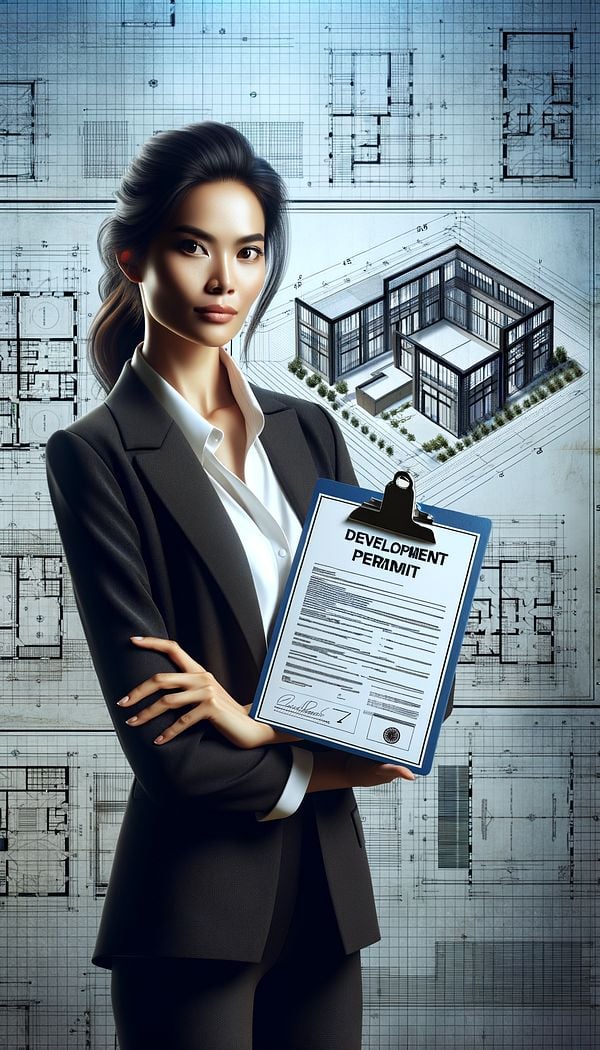What is a Development Permit?
A development permit is official approval from local authorities allowing new construction, expansion, or alteration of buildings.
Description
In the context of interior design, a development permit is a critical document that ensures any major changes to a building or new constructions comply with local zoning, building codes, and bylaws. It's a regulatory tool used by municipalities to oversee and manage the development within their jurisdiction to ensure it aligns with the community's planning objectives. Before any significant construction and building project begins, obtaining a development permit is usually required. This process involves submitting detailed plans and drawings for review, which may include architectural elements, site plans, landscaping details, and more.
Securing a development permit ensures that the project adheres to safety, health, and aesthetic standards, which are crucial for the well-being of the occupants and the overall harmony of the community. It's a way to safeguard against haphazard developments and maintain a certain level of quality and coherence in urban and suburban environments. For interior designers and architects, understanding the prerequisites and process of obtaining such permits is essential for smooth project execution and compliance.
Usage
A real-estate developer planning to build a new apartment complex would need to apply for a development permit to ensure the project complies with local zoning laws and building codes. Similarly, a business owner looking to expand their restaurant by adding a new outdoor seating area may also require a development permit to proceed with the construction.
FAQs
-
What information is typically required when applying for a development permit?
Applications for a development permit usually require detailed project plans, covering architectural design, site layout, and sometimes landscaping plans. Information on the intended use of the building, ownership details, and compliance with local zoning bylaws is also necessary.
-
How long does it take to obtain a development permit?
The timeline to obtain a development permit can vary widely, depending on the locality and the complexity of the project. It can range from a few weeks to several months.
-
Can a development permit be rejected?
Yes, a development permit can be rejected if the proposed project does not comply with local zoning bylaws, building codes, or fails to meet certain environmental or aesthetic standards set by the local authorities.
Practical Application
Always consult with local planning offices early in the project planning phase to understand specific requirements for a development permit. Be prepared to submit comprehensive project plans and possibly adjust designs to meet local regulations and standards. Keeping an open line of communication with the authorities can help facilitate a smoother approval process.
-
Architectural Elements199 articles
-
Technical Terms38 articles
-
Space Planning & Layout134 articles
-
Construction & Building86 articles
-
Dado RailA dado rail is a horizontal strip of molding attached to a wall, typically around waist height.
-
Biophilic DesignBiophilic Design is an approach to architecture and interior design that seeks to connect building occupants more closely to nature.
-
CabochonA cabochon refers to a stone that has been polished and shaped without faceting.
-
CartoucheA cartouche is an ornamental frame around a design or inscription.
-
Accessible DesignAccessible design is an approach to creating spaces that are usable by people with a wide range of abilities.
